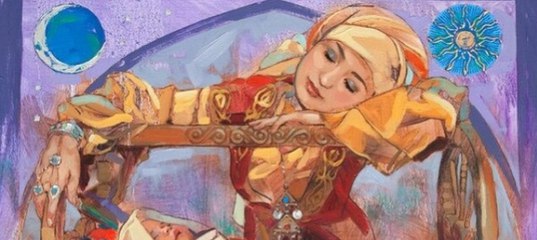Like all mothers of the world, Kazakh women sing lullabies to their children. They are called “besik zhyry”, emphasizing that this is not just a singing at the cradle, but “zhyr” is an epic or a legend that has great educational purpose.
The most famous besik zhyr is “Ay-ay, bopem” (Oh, my baby).
In ancient times, women put all their innermost feelings in the lullaby – longing for their native village, and for their relatives and friends. After all, once married, women very rarely, only a couple of times in their entire lives, could visit their relatives back in their native village.
For many centuries, the obligatory attribute of the lullaby was the “besik” – a special cradle. This unique invention was ideally suited for nomadic lifestyle. The baby was warm and dry there, it was very easy to swing it without fear that the child could fall out of the cradle.
They used to make besik from birch, pine or other solid wood. Now they use different wood, there are even electronic analogues of the old besik.
“The cradle of the child is the door to the wide world” is an expression that is attributed to the great Kazakh bi or judge Tole. It perfectly conveys the value of the children’s lullaby for the Kazakh people.
There are many rituals and beliefs associated with the besik. Here are just a few of them:
- The besik cannot be broken, thrown away, or given to strangers.
- It was strictly prohibited to cradle an empty besik.
- To cover the besik to protect the baby from evil eyes and drafts.
- Leaving the besik in the ashes, in an empty house, where everyone moved from, was also impossible.
- One of the terrible curses was to wish someone: “May there never be a cradling besik in this house ” – “Besigin terbelmesin”.



